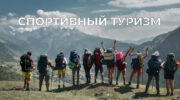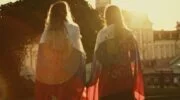In the article “Orienteering” we will talk about the sport called “chess on the go”; the variety of disciplines and the equipment used.
Orienteering is a sport in which participants run a distance along a route in the shortest possible time, using a map and compass.
Orienteering got its modern form in 1919, when Major Ernst Kyllander from Norway invented a competition where cross-country runners not only compete for speed, but also look for their own route.

From that moment the sporting movement began to spread in Europe, and in 1961 the International Orienteering Federation (IOF) was established with its headquarters in Karlstad, Sweden. Five years later, the first World Championships were held.
Today orienteering is widely represented in leading sports forums such as the World Games, the World Police and Firefighters Games, the Military Sports Games. At the moment the international federation includes about 80 member countries.
The first orienteering competitions in Russia were held in 1939 in the Leningrad region. Initially, only adult athletes could take part in the competitions, but in the early 90’s there were youth and children’s starts.
The popularity of orienteering is growing rapidly, as a pleasant, interesting and health-improving form of active recreation is available for people of all ages with any physical fitness.

Using a compass and a map, competitors search for control points (CPs) in or outside the city. The winner is the one who finishes first, having checked all the checkpoints. In the traditional version athletes move by running, but there are also orienteering on skis, on bicycles, TrailO (orienteering for the disabled) and Rogaine (long-distance orienteering).
The main requirement of an applied sport is “Don’t run faster than your head thinks!” You can’t get first by relying only on strong legs or the ability to think fast. Both are necessary to win. These qualities are only developed through systematic and persistent training as well as competitive experience.
There are several disciplines of orienteering, but the most popular are:
- Classic
- Sprint
- Long
- Marathon

Competitions in orienteering take place in a set direction, i.e. the competitor visits all control points in a certain sequence. In tournaments, however, the checkpoints are arranged in any order, i.e. according to the orienteer’s choice.
A control point on the course is marked with a special flag in the form of a prism and an electronic marking station. The athlete, running to the control point, is marked with an electronic chip and then continues his movement to the next control point.
The information that the athlete has made a mark is recorded on the chip. After completing the course, the judge can read detailed information from the device: the time of the total distance, the time from one checkpoint to another.
Selecting the right and quality equipment for orienteering is very important. The uniform should be for running, breathable and not constrict movements. To successfully overcome the distance, the athlete needs special equipment in addition to the outfit.

Sports terrain map (terrain that is depicted in symbols and reduced in scale, e.g. 1:7500). In order to read a map, it is necessary to know the symbols. The map is labeled with the name of the event, the date of the event, the scale of the map, the relief cross-section, and the emergency azimuth.
Next, the course with start, finish and checkpoints is plotted on the map. The start is marked with a red triangle, the finish with a double circle and the checkpoint with a single circle.
The map itself is multicolored and has different symbols on it. All symbols on the map are divided into 5 groups. For example, the forest on the map is shown in both white and green color. The darker the green color, the more difficult it is to walk through it. I.e. white color indicates on the map a forest that is easy to run through, and dark green color indicates a thicket that is difficult to walk through.
On the map you can see dotted lines – this is a network of roads (paths, footpaths, dirt roads). Brown color indicates relief (ravines, slides, pits, etc.). Blue color – water and everything that relates to it. Yellow color indicates meadows.

A legend is additionally placed on the map. Each checkpoint has a legend that tells you exactly where the checkpoint is located. Sometimes several objects fall within the circle marked on the map, and the legend indicates which bump or hole the control point is on.
The course is marked on the map in magenta or red. All information about the course is displayed in these colors. To get oriented on the terrain, the map should be turned so that the north of the map coincides with the north of the compass (the magnetic meridian lines should be parallel to the arrow).
There are three types of compass: on the thumb of the right and left hand, on the board (protractor). Tourists choose a compass that is on the board, as it can be placed on the wrist, and athletes mostly use compasses on the finger.
In sports compasses, the red arrow always points north. In the compass for tourists, this arrow may be a different color, but it must be signed with the letter N. In the tourist version of the compass, a marking in the form of degrees is applied to its bulb, and in the sports version it is absent.

Orienteering has a positive effect on the child, and it is not without reason that this sport is called “chess on the move”. It is both an intellectual and physical activity, and all this in nature. It is possible to enroll a child in orienteering from the age of 7.
Russian orienteering, the basis of which was laid more than 40 years ago, thanks to the efforts of hundreds of thousands of fans of running with a map and compass, is on the rise and this sport has a good future. Every year the attention to healthy lifestyle is growing, and the popularity of orienteering is only gaining momentum.
Orienteering is thus not only a sport, but also an amazing journey. It offers you the opportunity to test yourself and push your own limits. Regardless of your level of fitness, orienteering will give you new emotions, the satisfaction of achievement and the opportunity to try something new. So don’t be afraid to challenge yourself and start your journey into the world of orienteering. We sincerely believe that you will not regret this choice!
About Orienteering
FAQs
What is prohibited in orienteering?
In orienteering it is forbidden for participants to use technical means of communication and movement, navigation, except for the issued map and compass. It is forbidden to use doping, and after completing the route not to hinder or help other competitors to pass the route. You may draw attention to yourself only if you need medical assistance. It is forbidden to interfere with the work of the referee and to shorten marked routes. Any manipulation of the number or the order of entry on the course is strictly penalized.
What is a prism in orienteering?
A triangular prism in orienteering marks a control point that all participants of the competition must visit. The control point (CP) must be equipped with an electronic marker or a composter in addition to the prism.
What is the correct way to fold a map in orienteering?
The map is folded under the thumb of the hand with the compass, so that the thumb constantly points to the current location and the compass simultaneously shows the direction. As you progress, the map is unfolded with a new section in perspective, and the one you have already passed is folded.
What is Emergency Azimuth?
Emergency azimuth is the direction by which the searcher will always be able to get out of the forest to some long, linear object (highway, railroad, river, long field, etc.).









